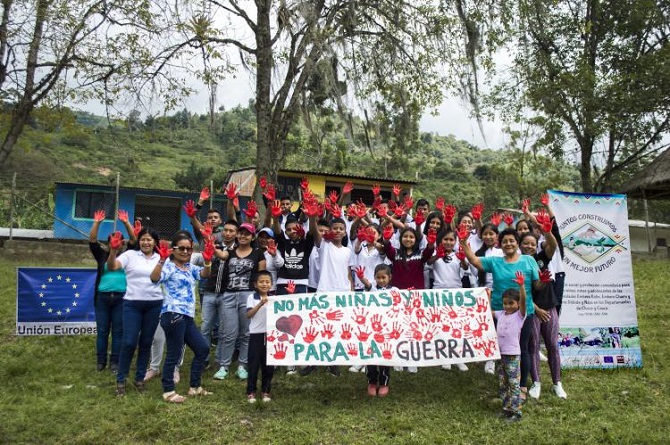On International Day against the Use of Child Soldiers, the EU reaffirms its commitment to end an atrocious practice that still takes place in around 20 countries in the world
At an age when they should be playing with toys, tens of thousands of children around the world are taught to shoot guns and take part in hostilities. They are used as fighters, but also in support roles like cooks, porters or spies; others serve as sexual slaves and human shields. There are currently 64 parties to conflict identified and listed by the UN due to documented patterns of recruitment and use of child soldiers. On the 20th anniversary of the Optional Protocol on the involvement of children in armed conflict, adopted by the UN General Assembly in 2002 and currently ratified by 170 countries, this terrible practice still takes place in around 20 countries in the world: Nigeria, Somalia, Iraq, Afghanistan, Democratic Republic of Congo, South Sudan, Syria, Yemen, Colombia, Myanmar, etc. On International Day against the Use of Child Soldiers, the EU reaffirms its commitment to protect and to promote the rights of all children everywhere, pursuing the eradication of their recruitment and use as soldiers and supporting their reintegration in society.
Six facts you may not know about child soldiers
- Children end up being engaged in armed forces and groups in many ways. Some are abducted and beaten into submission, but others join voluntarily to escape poverty, to defend their communities, out of a feeling of revenge or for other reasons.
- The UN receives reports of child soldiers in some cases as young as 8 or 9 years old.
- 4 out of 10 child soldiers are girls.
- The number of child soldiers involved in conflicts globally increased 159% between 2013 and 2018, according to the NGO Child Soldiers International. After analysing the UN annual reports on Children and Armed Conflict, they recorded almost 30,000 verified recruitment cases in 17 countries since 2012.
- At the same time, the global efforts to eliminate this practice obtain tangible results on the ground: in 2018, 10,000 children were released from armed groups and armed forces in the countries covered by the UN Children and Armed Conflict mandate, according to its last annual report.
- Released child soldiers often suffer traumas and social stigma, being in need of long-term reintegration programmes (including education, healthcare, vocational training and psychosocial support) that are not always at hand due to lack of resources.
What is the EU doing to fight the recruitment and use of child soldiers?
The European Union works in close collaboration with the UN Office of the Special Representative of the Secretary-General for Children and Armed conflict. With a view to achieving Target 8.7 of the 2030 Agenda (“to eradicate forced labour, end modern slavery and human trafficking and secure the prohibition and elimination of child labour, including recruitment and use of child soldiers”), European efforts are guided by the principles included in the EU Guidelines on children and armed conflict.
Over the years, the EU and the UN have continuously supported efforts to prevent the recruitment and use of children in conflict, to secure their release, and to ensure their reintegration. In Uganda, eastern Democratic Republic of the Congo, Central African Republic, Sudan or Syria, the EU has provided assistance to children in need, by reintegrating children associated with armed forces and groups into families or alternative care and by bringing them back to school. In Mauritania, the EU supports the UN to offer psycho-social support, insertion in the education system and socio-economic reintegration of child soldiers’ refugees from Mali. In Colombia, hundreds of minors affected by the armed conflict and armed groups were identified to benefit from assistance to reintegration, and a project on child release and reintegration in Sudan supports the implementation of the Action Plan to end and to prevent child recruitment and efforts to prevent recruitment of children at risk.
Read also
As education is central to preventing the use of children in conflict and to reintegration efforts, children associated with armed forces and groups are being prioritised for support to access education. To this end, the EU aims to increase humanitarian funding for education in emergencies to 10% of the overall EU humanitarian aid budget as of this year, and to bring children caught up in humanitarian crises back to school within 3 months.
The EU and the UN currently support the implementation of Action Plans to end and prevent the recruitment and use of children by 15 parties to conflict, with additional engagement in the countries on the Children and Armed Conflict agenda. This work, with the support of UN and NGO partners as well as Member States, has led to the release of thousands of children in 2018. Advocacy and engagement are also leading to positive developments to protect schools and hospitals, to curb sexual violence in conflict and to end and prevent other grave violations against children.
European Union





















































